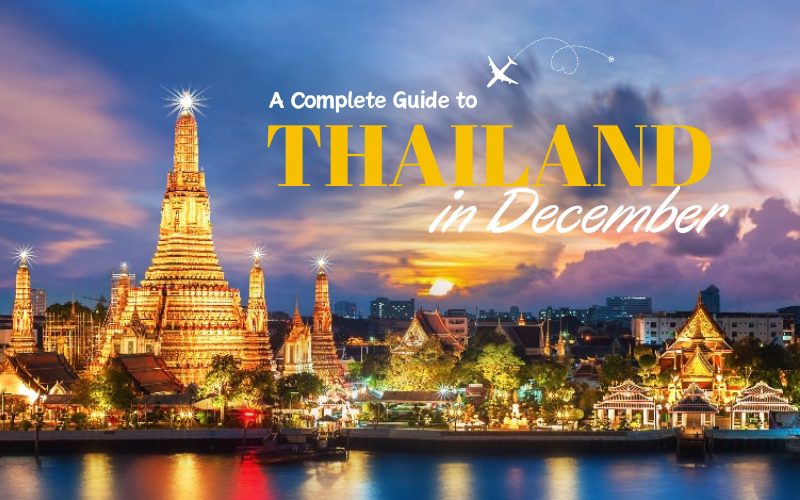Thailand is a tropical country and generally warm throughout the year, with three distinct seasons: the cool season, the hot season, and the rainy season. Understanding the weather patterns can help you determine the best time to visit and make the most of your trip.
An Overview of Thailand Weather
Cool Season (November to February)
The cool season is widely considered the best time to visit Thailand. During these months, temperatures are more moderate, averaging between 20°C (68°F) and 32°C (90°F), and the humidity levels are lower. This season is especially pleasant in the northern regions, where nights can be cool and refreshing.
- Bangkok and Central Thailand: Daytime temperatures hover around 30°C (86°F), with cooler mornings and evenings.
- Northern Thailand (Chiang Mai, Chiang Rai): Daytime temperatures are mild, ranging from 15°C (59°F) to 28°C (82°F). Nights can be cooler, especially in the mountains.
- Southern Thailand (Phuket, Krabi, Koh Samui): Coastal areas experience warm temperatures, typically between 25°C (77°F) and 30°C (86°F).
The cool season is ideal for sightseeing, outdoor activities, and exploring the country’s many festivals, such as the Loy Krathong Festival in November and the Chiang Mai Flower Festival in February.
Hot Season (March to May)
The hot season sees temperatures soar, with the mercury often climbing above 35°C (95°F). This period can be quite humid, especially in central and northern Thailand, making it less comfortable for some travelers.
- Bangkok and Central Thailand: Daytime temperatures can reach up to 40°C (104°F), and the city can feel particularly stifling.
- Northern Thailand: Temperatures are slightly cooler than in Bangkok but can still be quite hot, especially in the lowlands.
- Southern Thailand: Coastal areas experience hot and humid weather, but sea breezes provide some relief.
Despite the heat, this is a great time for beach lovers and water activities. The islands and coastal regions are less crowded than during the peak season, and the clear skies make for excellent diving and snorkeling conditions.
Rainy Season (June to October)
The rainy season, characterized by the southwest monsoon, brings heavy rainfall and high humidity. The intensity and frequency of rain can vary across the country, with some regions experiencing short, heavy downpours and others more prolonged rainfall.
- Bangkok and Central Thailand: Frequent rain showers, often in the afternoons and evenings. Flooding can occur in low-lying areas.
- Northern Thailand: Similar weather patterns to central Thailand, with lush, green landscapes due to the rainfall.
- Southern Thailand: The west coast (Phuket, Krabi) experiences heavier rain compared to the east coast (Koh Samui, Koh Phangan), which tends to be drier.
While the rainy season might seem less appealing, it has its advantages. The countryside is at its most verdant, the waterfalls are full, and the tourist crowds are thinner. It’s also a good time to find lower accommodation rates and fewer tourists at popular sites.
Best Time to Visit Thailand
The best time to visit Thailand is during the cool season, from November to February, when the weather is most comfortable for a wide range of activities, from city tours and cultural experiences to beach holidays and outdoor adventures. However, if you prefer fewer crowds and lower prices, consider visiting during the shoulder seasons: late October to early November or late February to early March. Beach enthusiasts might enjoy the hot season for its clear skies and warm seas, while those interested in lush landscapes and quieter travel might appreciate the rainy season.
>>> Read more: When is the Best Time to Visit Thailand?
By understanding Thailand’s weather patterns and aligning your travel plans with the season that best suits your preferences, you can ensure a more enjoyable and fulfilling visit to this beautiful and diverse country.












